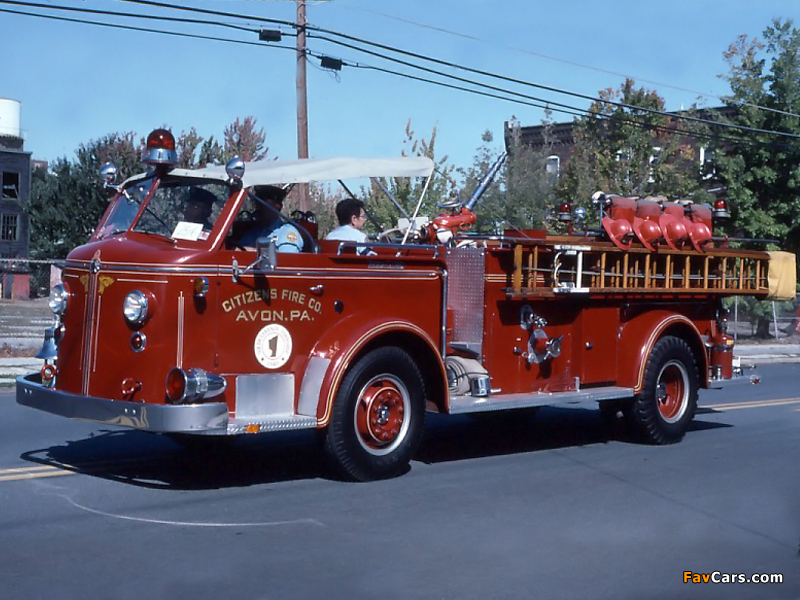
A-T-O acquired Snorkel Fire Equipment in 1973 and Snorkel and TeleSqurt aerial devices were added. In 1966, it became a division of the Automatic Sprinkler Corporation (later Figgie International (1963), renamed A-T-O in 1969). In 1955, American-LaFrance merged with Sterling Precision Instrument Corporation to form American LaFrance Corporation.
#700 series american lafrance series#
After the Second World War, ALF introduced the 700 series of cab-forward chassis, revolutionizing the fire truck. Developments included V-12 engines, cab-forward apparatus, hydraulically-operated aerial ladders and more. Historians have likened ALF to the General Motors of fire trucks. Over the following decades, ALF moved from steam powered apparatus to motor-driven vehicles, creating many innovations and becoming a dominant player in the industry. The new company took the names of its most prominent components, American and LaFrance, to form American-LaFrance. However, the new entity proved unwieldy and was restructured again in 1904. In 1900, Chicago industrialist Charles Locke consolidated the American Fire Engine Company, the LaFrance Fire Engine Company and other manufacturers to form the International Fire Engine Company. The company was renamed LaFrance Fire Engine Company in 1880. In 1873, Truckson LaFrance and a number of investors founded the LaFrance Manufacturing Company in Elmira, New York, where it manufactured, among other things, steam fire engines. In 1891, Button merged with three other steam fire engine builders (Silsby, Ahrens and Clapp & Jones) to form the American Fire Engine Company. Production continued under the name of Button & Blake and steam fire engines were built in the latter part of the 19th century. The company changed hands, and by 1841, was owned by Lysander Button. In 1832, John Rogers began building hand-operated fire in Waterford, New York. Manufacturers History: American LaFrance was incorporated in 1904, but can trace its history to a period several years before that. Call Bob at 1-87 for more details or to schedule an inspection of this clean Stainless Steel Pumper. The truck passed pump certification October 2019 and has a hydraulic ladder rack. The truck is equipped with an NFPA warning light package and sirens. Officers side pump panel has 5″ and two 2.50″ intakes and two 2.50″ discharges. The rear is equipped with a 2.50″ intake and 2.50″ discharge. Driver’s side pump panel has 5″ and two 2.50″ intake and two 2.50″ discharges.

The truck has 2 crosslays, 2 booster reels and a deck gun.

Powered by a Detroit Diesel Series 60 350HP and Allison automatic transmission. not rated $36.Description 1989 American LaFrance Century 2000 Stainless Steel Rescue Pumperįour door enclosed cab with seating for 6 and 3 SCBA seats.

This long-overdue, eagerly anticipated compendium is the only book ever published devoted exclusively to this revered American firefighting classic. This authoritative, thoroughly-researched and richly illustrated book documents the big 400's relatively short, but spectacular, production life. With its long, gracefully tapered hood, skirted fenders, classically-proportioned gabled radiator and oversized wheels, the big 400 was a triumph of industrial design - an eye-pleasing blend of form and function, and the industry's first truly styled fire engine.
#700 series american lafrance driver#
Powered by the company's industry-leading V-12 engine, the 400 Series Metropolitan had its high-capacity pump mounted in the truck's cowl ahead of the driver instead of in the usual midship location under the driver's seat. In 1934, at the depths of the Great Depression, the American-LaFrance-Foamite Corporation of Elmira, New York, designed and placed into production an uncommonly handsome new big-city fire engine.


 0 kommentar(er)
0 kommentar(er)
